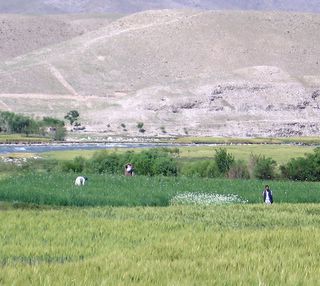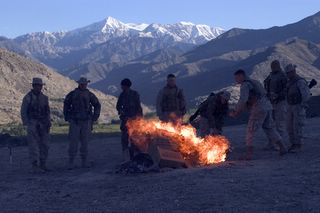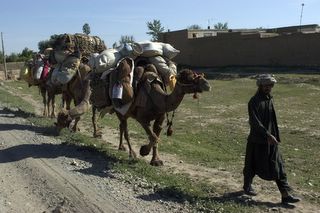 (c) Roger Leo
(c) Roger Leo
Animals are 80 percent of Afghanistan's legal economy and, after 20 years of war and 10 years of drought, the country has become an importer, not exporter, of animal protein. So Massachusetts State Veterinarian David Sherman, DVM, of Newton, left; Lt. Col. Michael B. Lennon, DVM, of Groton, center; and James Q. Knight, DVM, of Hardwick, director of animal sciences at Becker College in Leicester, right, are working together to help here. (As my old colleague Bill Clew often says, "There's always a Worcester connection.") This willingness to put their normal lives on hold and come here is important to think about amidst the poverty and violence, destruction and despair that hit a visitor in the face when one first sees this country. As often while traveling in the Third World, it is striking how lucky Americans are.












